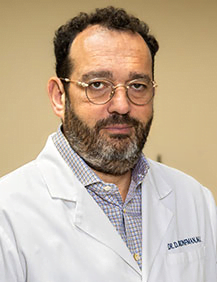The Only NYS Approved by
DOH Surgical Facility
*Same Day Appointments & Walk-Ins Welcome
The Only NYS Approved by
DOH Surgical Facility
*Same Day Appointments & Walk-Ins Welcome

Endometriosis is a painful and chronic condition in which the inner lining of the uterus or the endometrium is present not just within the uterus but outside it too. Basically, the tissue that lines the uterus from the inside grows in clumps or patches on organs around the uterus like the fallopian tubes, ovaries, outer surface of the uterus, or intestines, and in some rare cases on other organs inside the stomach or in areas beyond it. These endometrial patches are known as implants.
Unfortunately, the endometrial implants tend to grow, shed, and bleed just like your inner uterine lining or endometrium. This explains why the pain and discomfort associated with this condition is almost always around the woman’s menstruation. However, frequent pain that comes up regardless of the menstrual period is quite common too; especially when the implants are situated is delicate areas. Just the same, women suffering from endometriosis often experience pain during sexual intercourse, on passing motion, or during exercise.
Endometriosis generally affects women in the reproductive age group due to its estrogen dependence. Although, it may seem like an uncommon condition, nearly 80% of the women with frequent pelvic pain and almost 20-25% of infertile women are diagnosed with this condition. After all, this is also one of the leading causes of infertility in women.
Endometriosis produces a wide variety of symptoms that may be anywhere between mild to moderate. Yet, a lucky few may even get by without any overt symptoms. Generally, pain around the menstrual period is the most bothersome of the endometriosis symptoms.
Endometriosis is treated with NSAIDs or non-steroidal anti-inflammatory drugs like acetaminophen, if the pain becomes unbearable or begins to obstruct the woman’s daily activities. Additionally, hormonal therapy with oral contraceptive pills, Gonadotropin-releasing hormone agonists, progestins, or Danazol to reduce the hormone estrogen and prevent ovulation is often successful in reducing the size of the implants and relieving the symptoms linked with endometriosis.
However, when none of these medications seem to work, or if the endometriosis begins to interfere with the functions of the adjoining organs in the abdomen, or the women experiences infertility, then surgery is most likely the best possible option. A Laparoscopy is usually done in such women to diagnose and remove or destroy the endometrial implants and scar tissue. Similarly, a hysterectomy and oophorectomy or removal of the uterus and ovaries may be advised in women who do not plan to conceive. Sadly, the endometriosis causes is still not very clear, though it does tend to run in families.

Dmitry Bronfman, MD, is a board-certified gynecologist who specializes in all aspects of contemporary women’s health, preventive medicine, pelvic pain, minimally invasive and robotic surgery, and general, adolescent, and menopausal gynecology.
Brooklyn Abortion Clinic